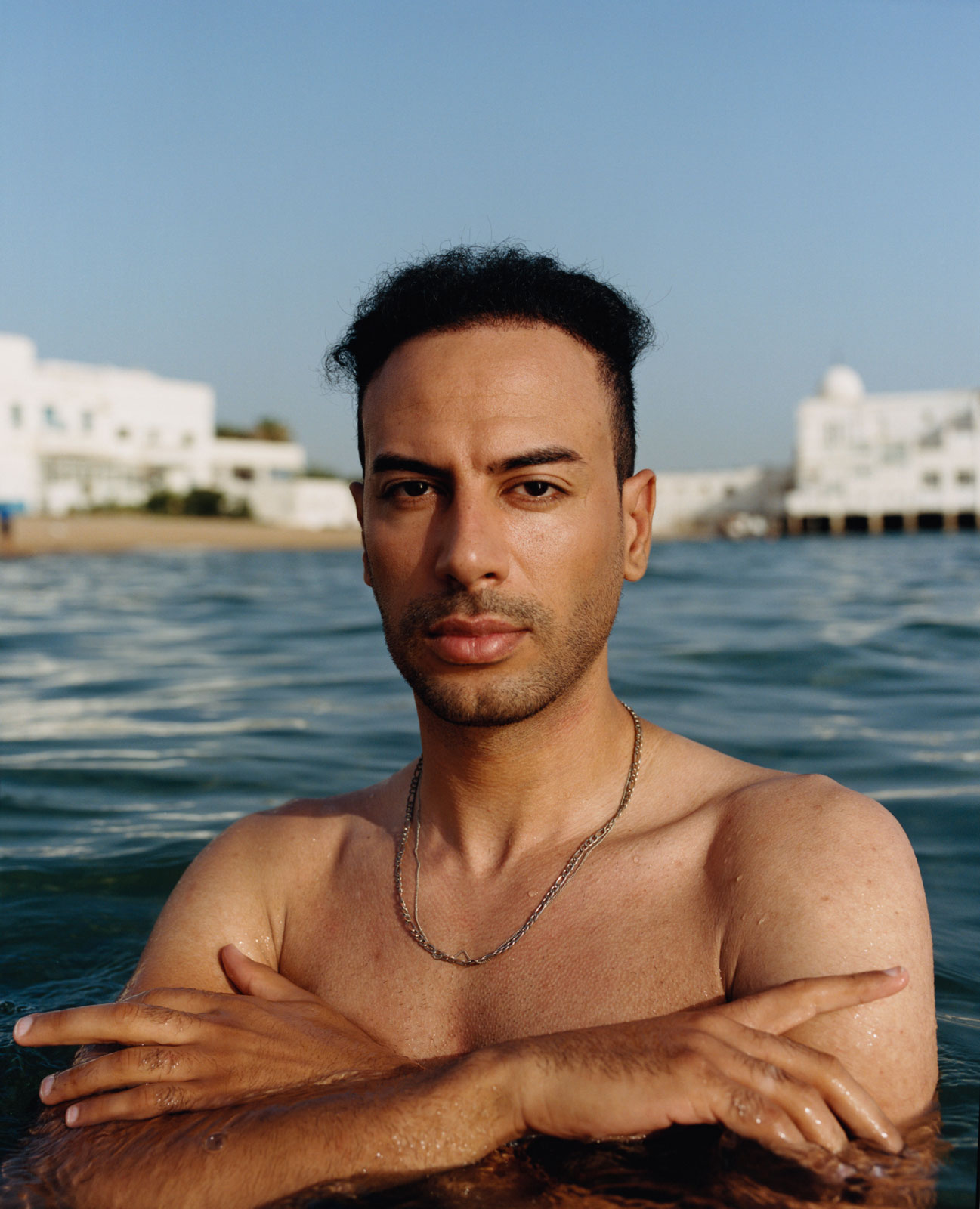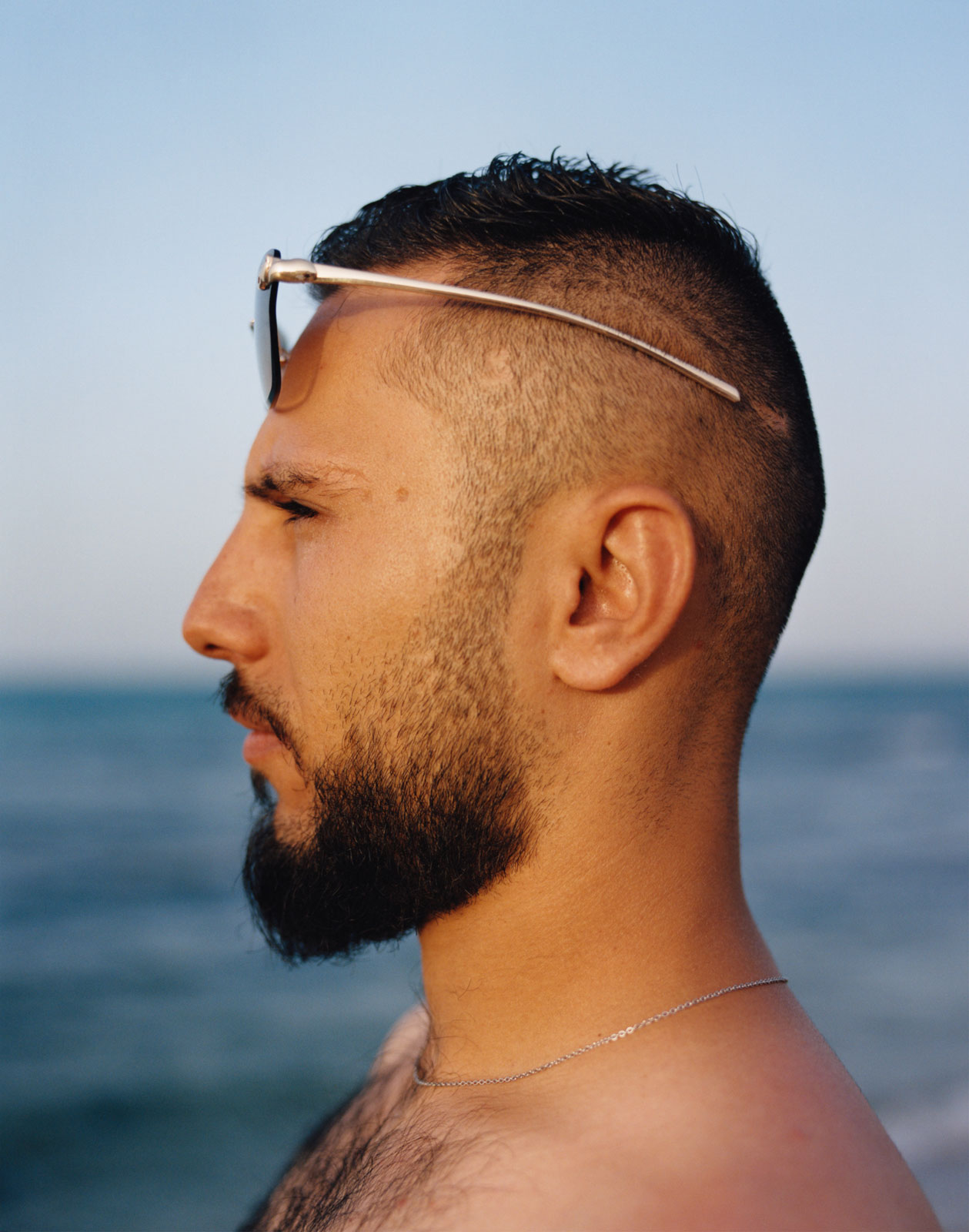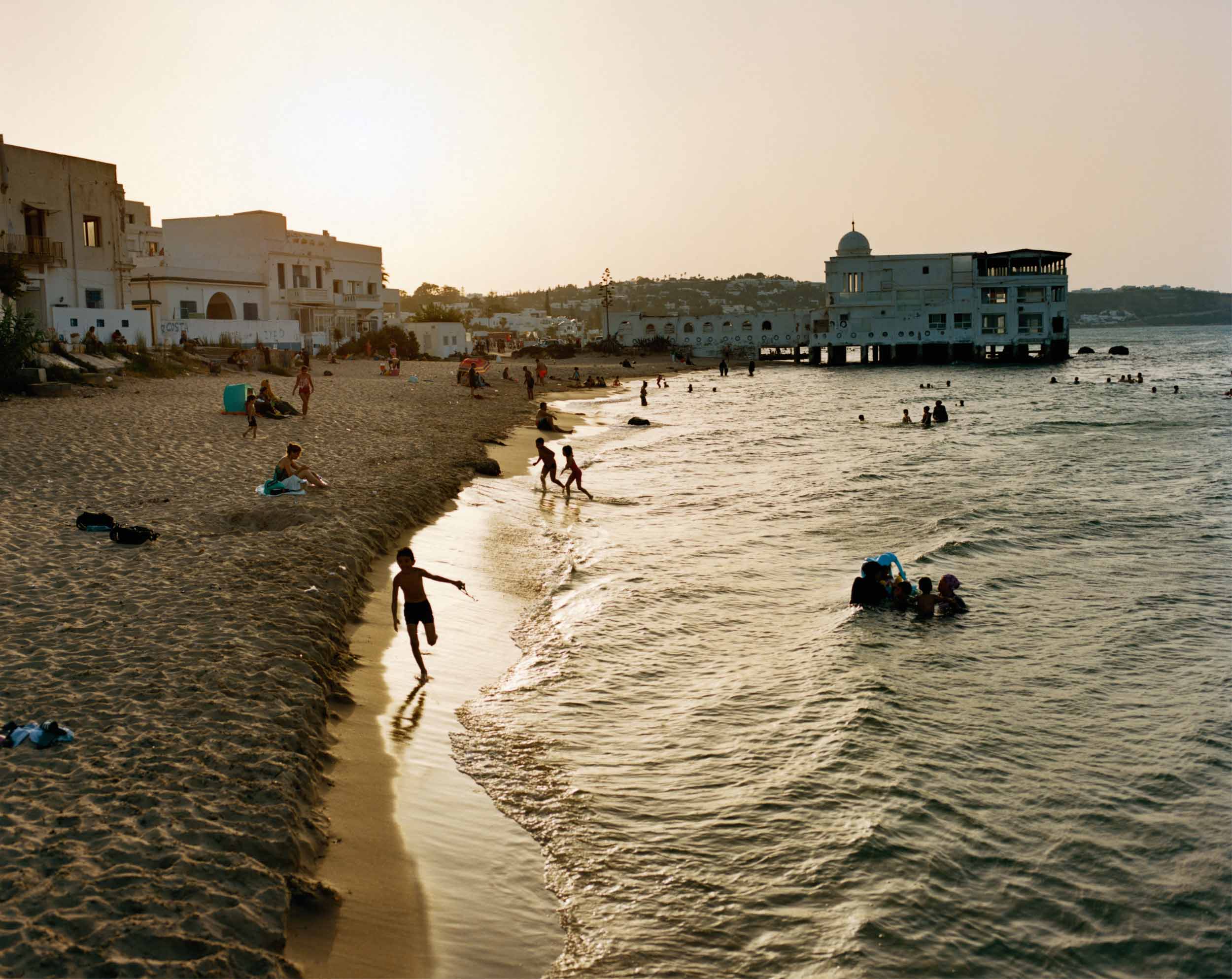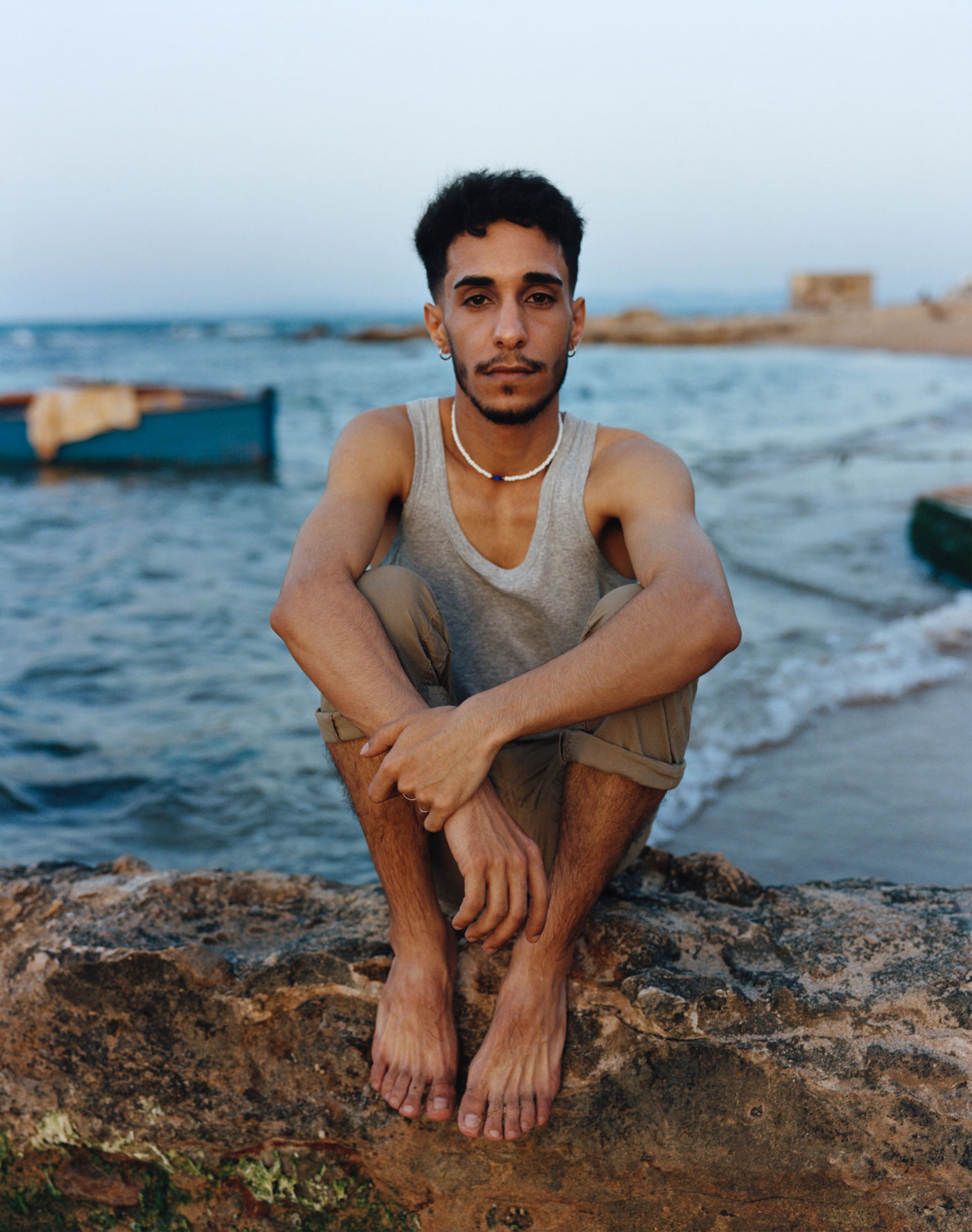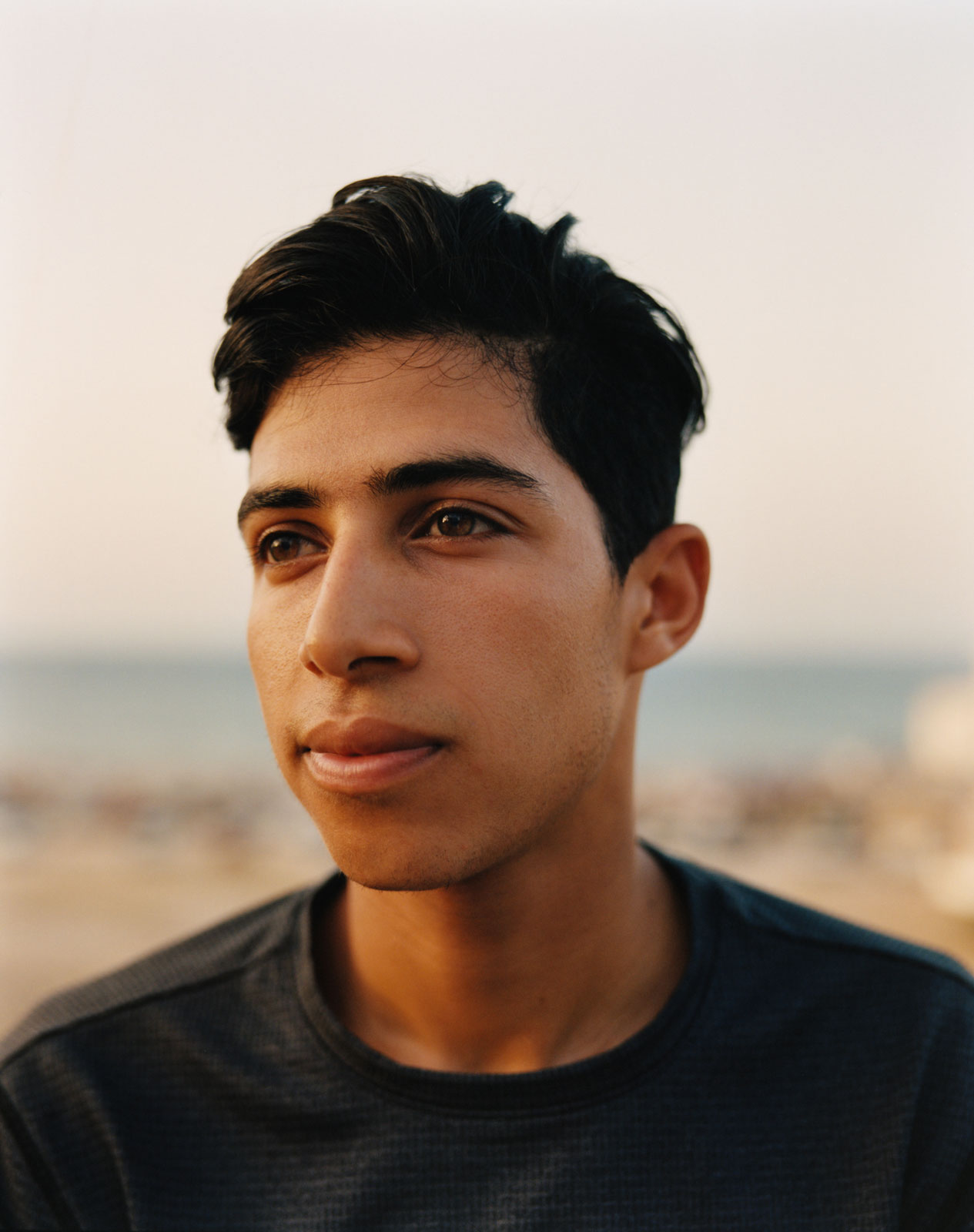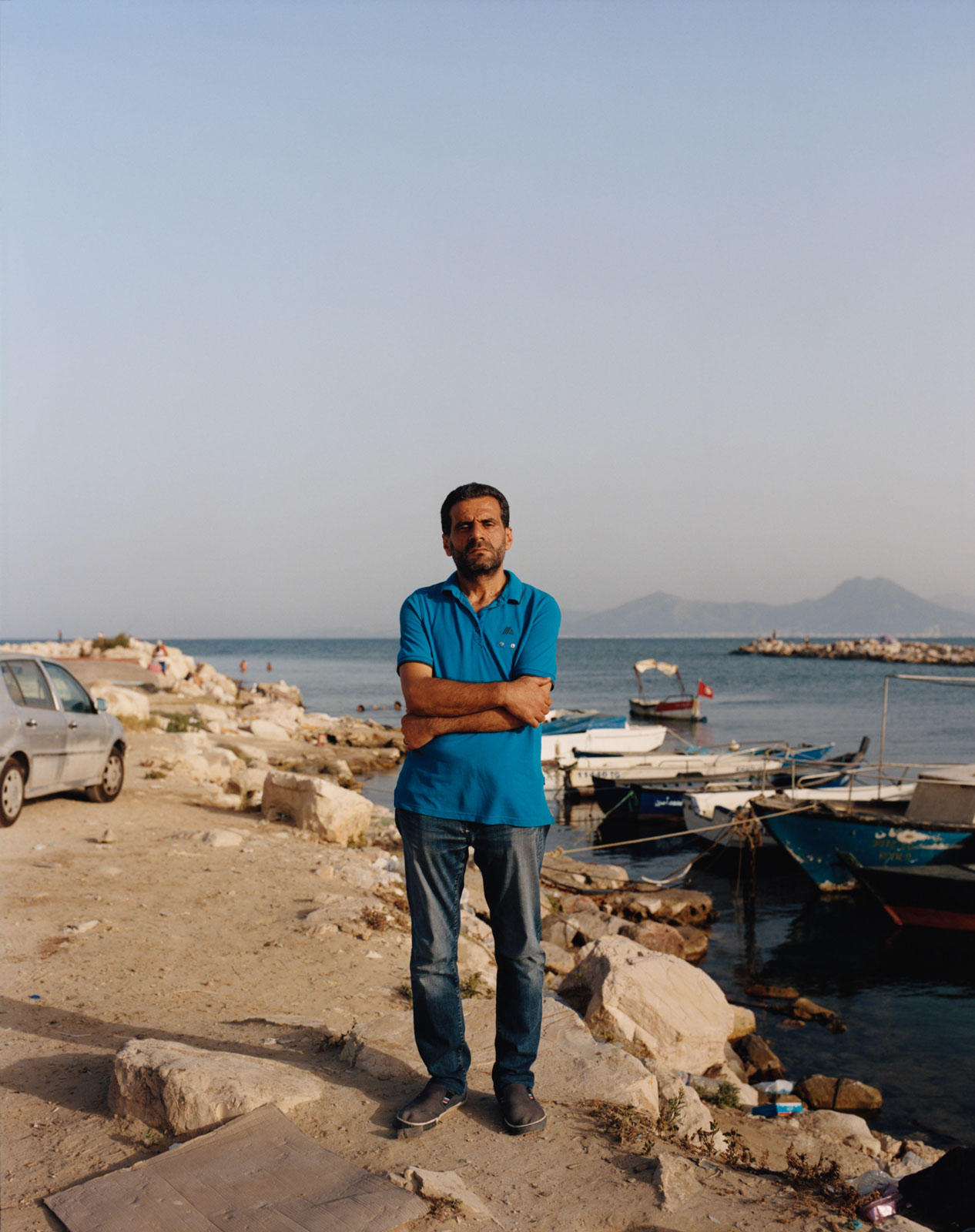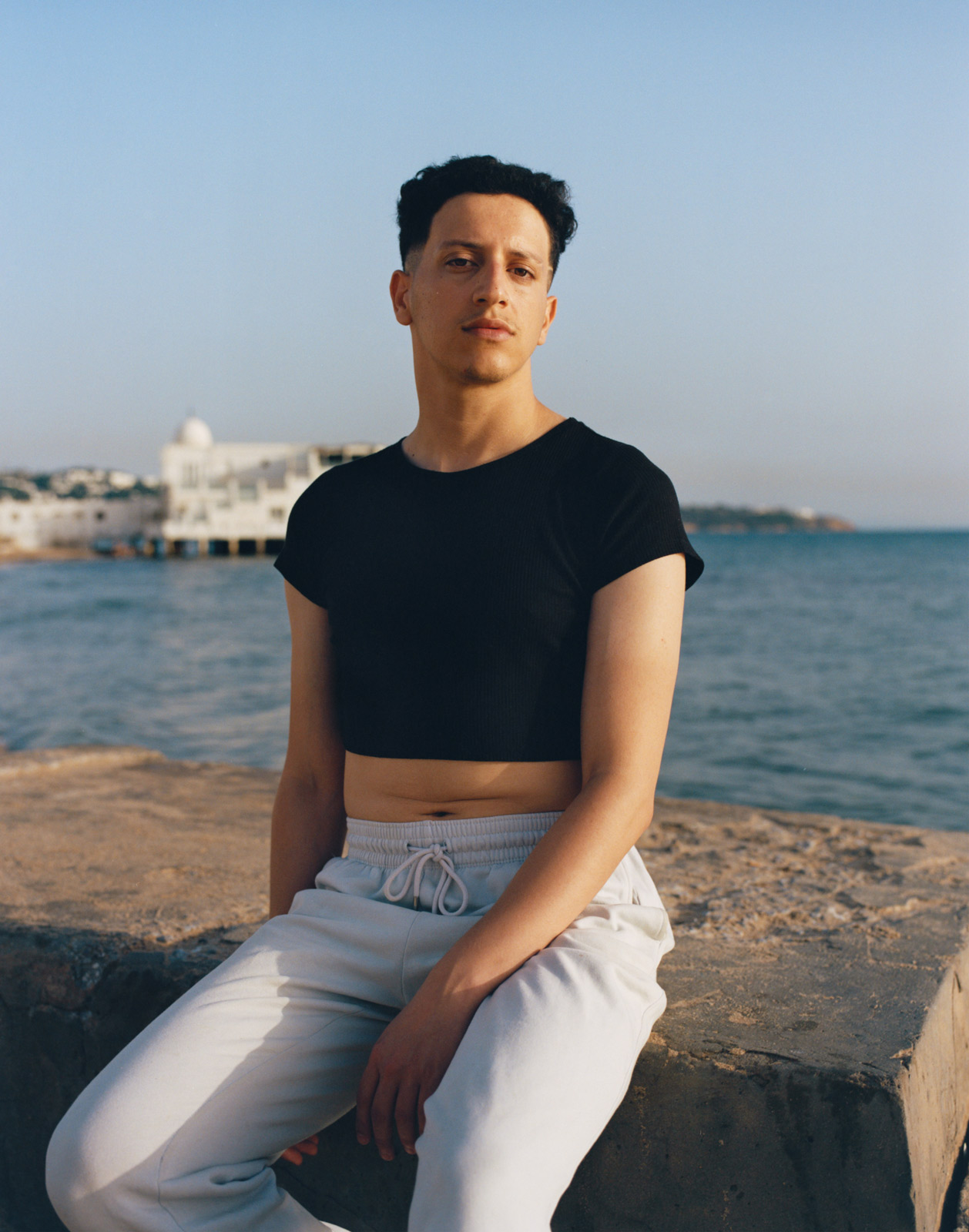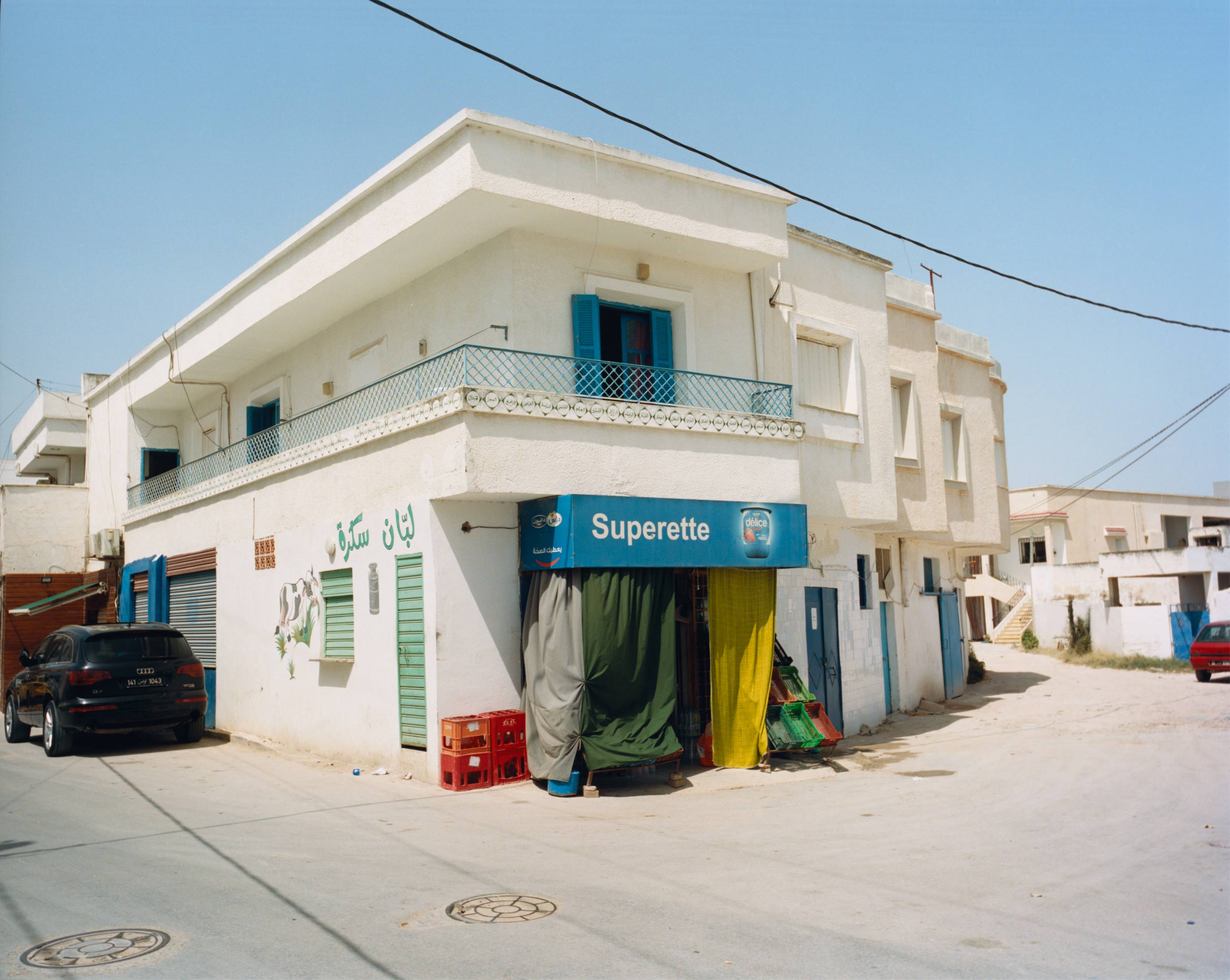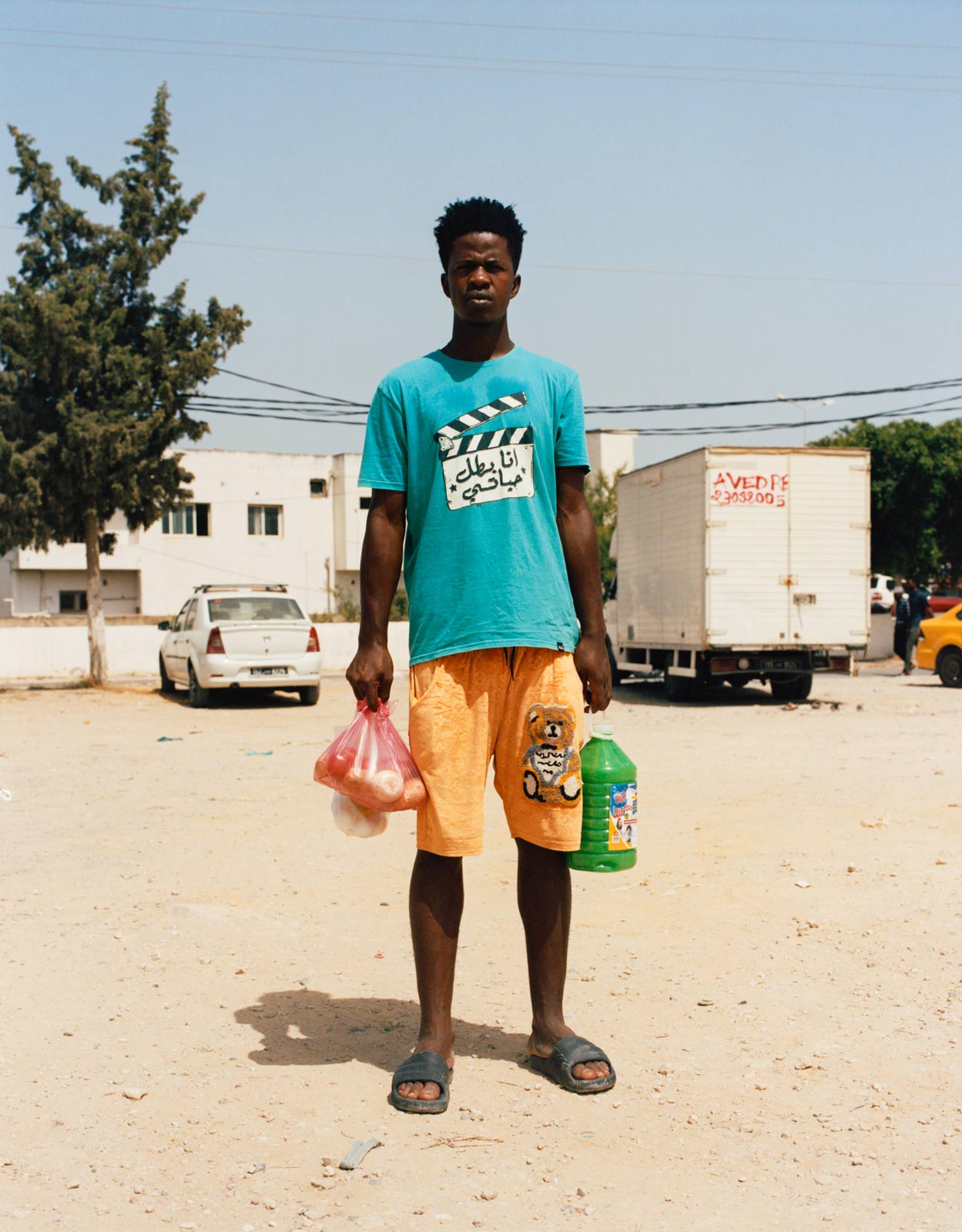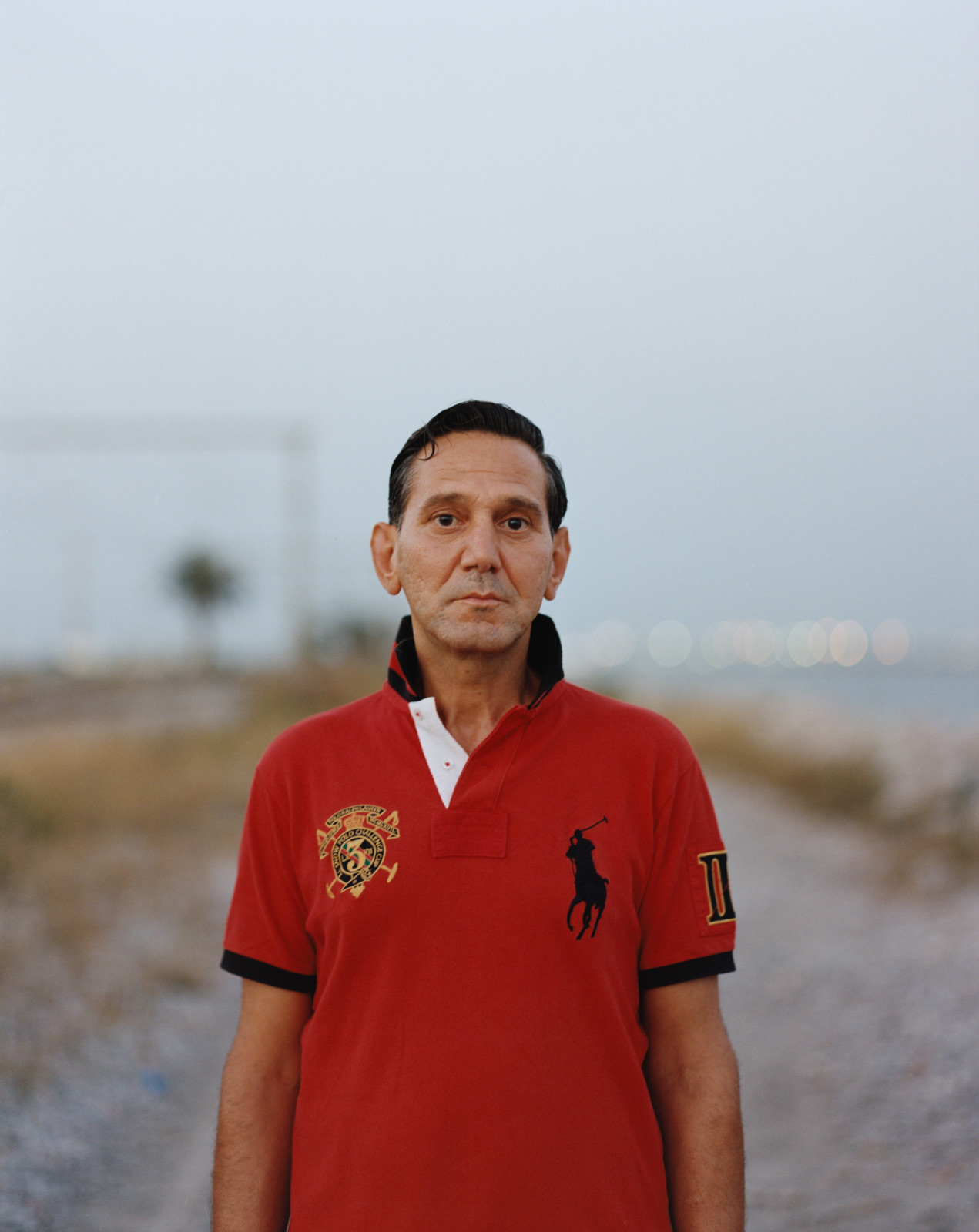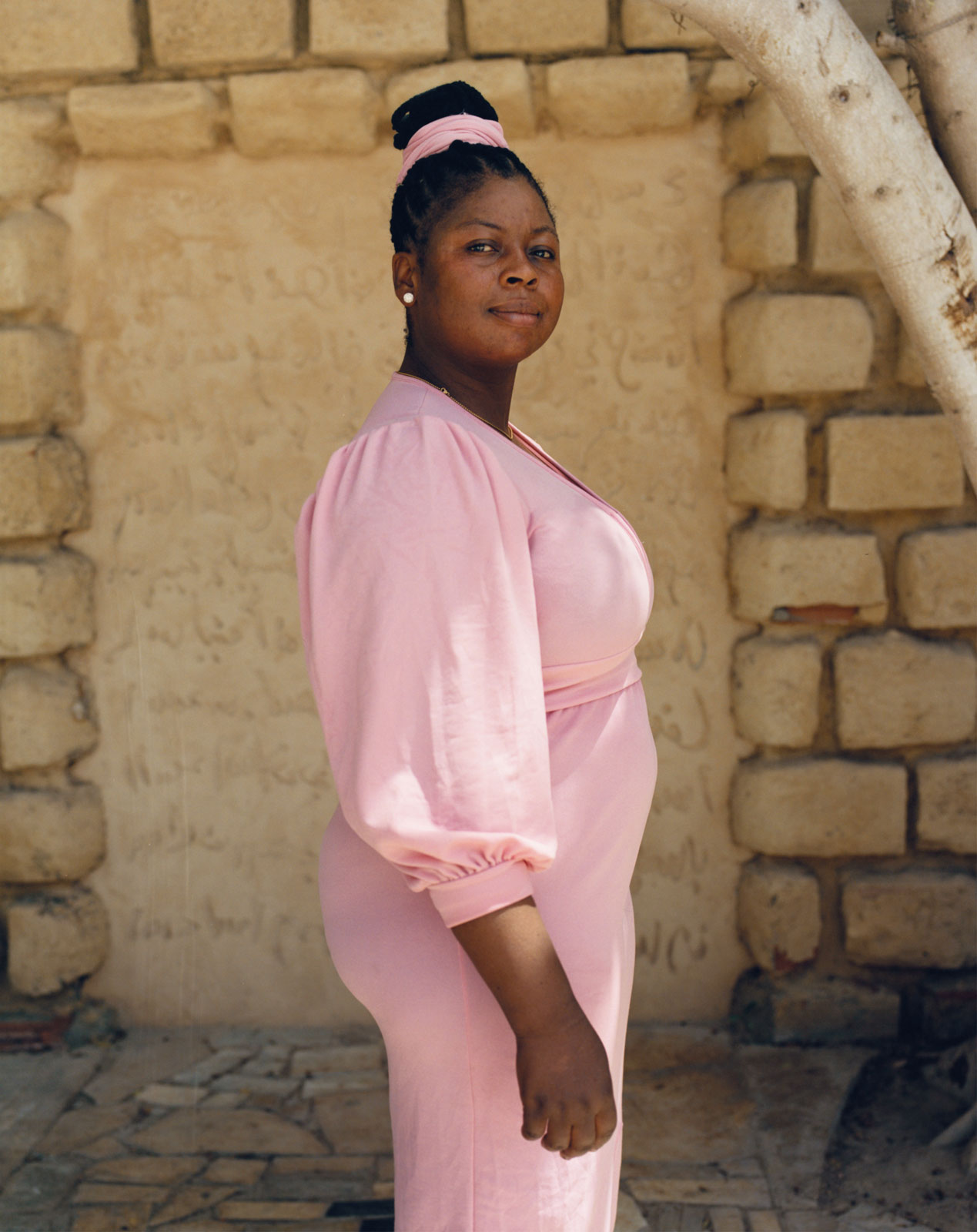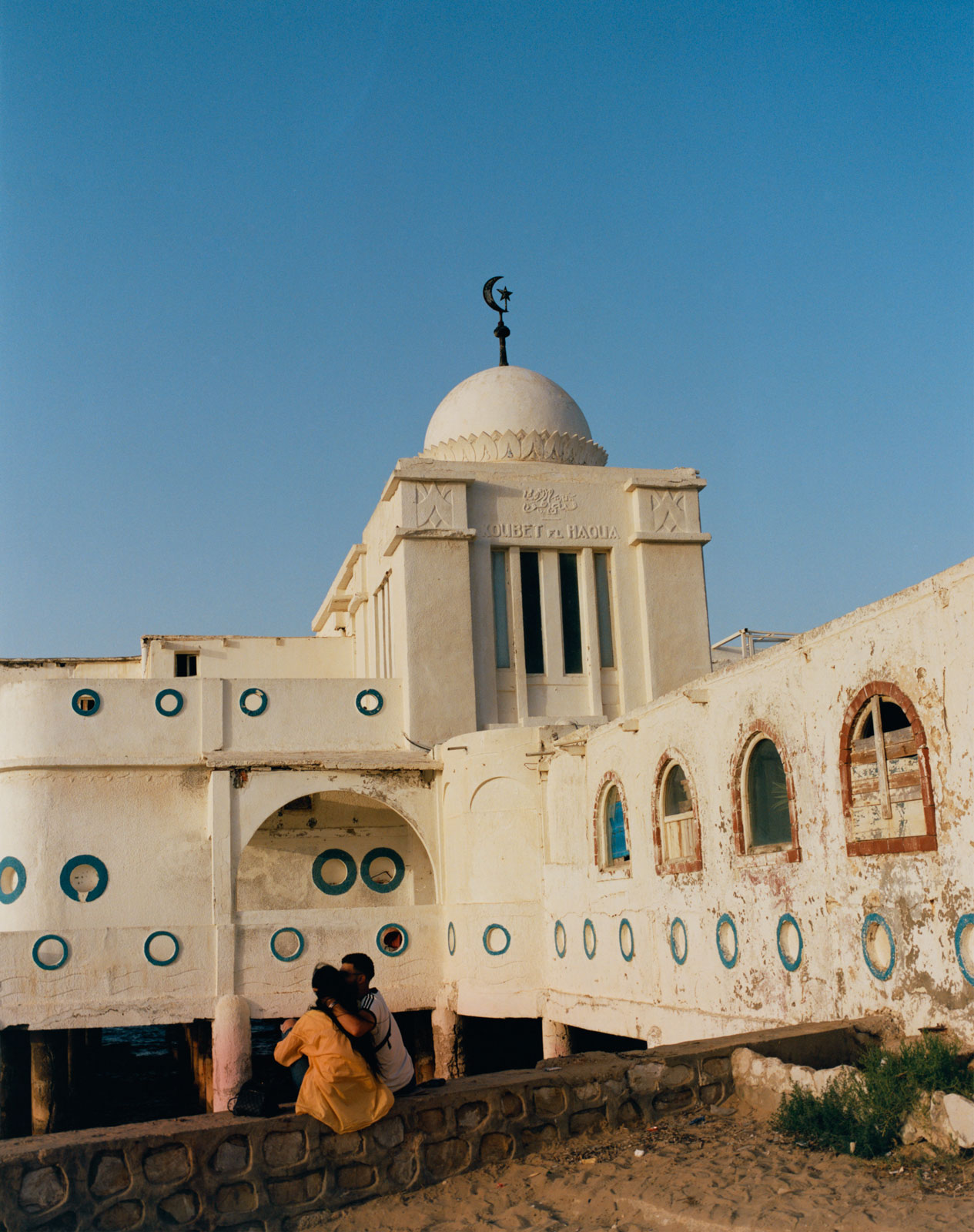
Photographer Laurence Ellis captures individuals living and dreaming on their own land for Document’s Fall/Winter 2023 issue
Where can we walk through this cold, cruel world?
Where can hope be found? Or a tender heart? Or open arms? Or generous eyes that recognize us?
Where can we exist, finally, as human beings like any other? Where?
Just a moment. Just a small moment of respite, if you please. We can’t wage war all the time. We can’t engage in endless battles, useless arguments, and conversations that fall on deaf ears. We know perfectly well that you don’t want us. You hate us. You insult us. You rape us. You kill us. Every day, we invent techniques to escape the harm you wish for us, to escape the power and laws that continue to criminalize us—in vain. You never tire. We, queer people, are your obsession. In humiliating us again and again, you want to prove how good you are. People of God. Patriotic citizens. Even when you are bourgeois or intellectual, you act just like the others: rejecting us. Your backs turned. Your love that disappears. Your humanity that ceases to exist. We are alone. We queer people. So alone. So isolated. Since the beginning. Since childhood. It takes forever to be truly convinced that the world is ours, all of ours. Forever to finally find a friend. To find someone who understands us, who gives us a little smile. At school. At the supermarket. On the bus. By the river. There, on the other side of the street, in that house, through that open window, that woman is waving warmly. To whom? To me, the little lesbian? To me, the rejected trans person?
Yes, it’s you—I am smiling at you.
I love you, I love all of you—you and your friends. I am with you. Don’t forget that. Tell the others. I’m thinking of you. Sometimes, I pray freely for you.
That rare smile from that warm window—was it really there or did my heart invent it?
It doesn’t matter. We must survive.
“We, too, want to live. To find peace. To sleep without nightmares. To realize our plans and our fantasies. To write our poems on the walls.”
Living and dreaming are the same thing. Everything, absolutely everything, starts with a vision. A dream. A hunger. Something in the air. I see the miracle that’s coming. I feel it—the revolution is approaching. Me, I am a seer. And me, I am a witch. Queer people are the strongest. Yes. Yes. Get these words into your head. We survive despite those people. We advance despite them. We are constructing a new way toward love. A beach. The sun. A caress. A kiss. The end of prisons. The end of fear. The end of their dictatorship. We are singing with Sam Cooke. Yes, a change is gonna come. Change is already here. Don’t you see it?
But this “change” is not for us. We don’t see anything. What are you talking about?
And us, have you forgotten us? We no longer know how to face these racists who won’t stop shouting so loudly. Tell us what to do. Please. We want to run away. To leave and never come back. We, too, want to live. To find peace. To sleep without nightmares. To realize our plans and our fantasies. To write our poems on the walls. Help us, please.
And go where? Paris? London? Berlin? Copenhagen? Stockholm? New York? Are you aware that the wind of overt racism has returned stronger than ever in that muddled West? You are queer. You are African. You are Arab. You are Muslim. There, they no longer like people like you—people of your skin color. There, they have democracy to legitimize openly fascist political parties. There, you’ll find another battle waiting for you. An unwinnable battle. You’ll find white people who believe they know you better than you know yourself, even though they know nothing about you, your ancestry, or your history. They just want to play the savior. Do you still want to leave Africa, which needs you and your youth and your wonderful energy? Do you still want to leave Tunisia behind and find some hypothetical happiness in Europe? Is that it?
We are not naïve. We queer people are very connected to the world, to its networks, to its social media. We aren’t blind. We know what’s going on in the West right now. We know perfectly well what battles await us there. Yes, we want to leave, leave, leave.
I give all, all, all my beautiful, strong, and tender love, for all of you on the journey. In the desert. In the waves. On the long roads of exile. On the path to free love. I love you. I support you. I send you my warmest wishes…
Alaa, a street vendor, on La Marsa Beach, Tunis, Tunisia.
Left: Rayan Wehbe, Tunisian. Although he lives in Tunis, which might be perceived as a more “liberal” community compared to the rest of Tunisia, prevailing attitudes toward the LGBTQIA+ community starkly contrast those in Northern Europe or the Unit- ed States. Since the 2011 Revolution, Tunisia has made significant strides in protecting civil and political rights, especially concerning freedom of expression and association. However, for the country’s LGBTQIA+ community, various forms of systemic discrimination and stigmatization persist. These are often backed by a repressive legal framework, notably Article 230, which criminalizes same-sex activity. This discrimination is a daily source of fear, intimidation, and violence. The criminalization of homosexuality in Tunisia began with the passage of the 1913 Penal Code, introduced by colonial authorities during the French protectorate. Notably, in December 2022, two members of the LGBTQIA+ community in Tunisia—a gay man and a transgender woman—were convicted of homosexuality and sentenced to one and three years in prison, respectively.
Right: Imad, Libyan. Since 2016, European Union member states, led by Italy, have been collaborating with the Libyan authorities—providing speedboats, training, and assistance in the coordination of maritime operations—to ensure people attempting to flee the country by boat are intercepted at sea and brought back to Libya. During this period, an estimated 60,000 men, women, and children have been captured at sea and disembarked in Libya by the EU-supported Libyan Coast Guard (LCG), 8,435 of them between January 1 and September 14, 2020, alone. When disembarked in Libya in 2020, thousands of refugees and migrants ended up detained in official Directorate for Combating Illegal Migration (DCIM) detention centers under the authority of the Ministry of Interior of the UN-backed Government of National Accord (GNA), in control of western Libya. Thousands more have been subjected to enforced disappearance in 2020 after being transferred to unofficial places of detention, including the Tobacco Factory (a reference to its former function) under the command of a GNA-affiliated militia led by Emad al-Trabulsi in Tripoli, amid fears for their life and safety.
Left: Koffi and Adama, Ivorian. Ivorians represent the largest sub-Saharan African community in the country. The community faces increasing racism, with a significant rise in xenophobic attacks reported. Due to the increasingly hostile situation in Tunisia, many view their only option as boarding illegal boats to cross the Mediterranean, hoping to reach Europe, even though there’s often a slim chance of survival. “So far, the Tunisian authorities have sought to downplay these violent attacks and even deny them altogether,” Amnesty International writes. “Authorities should prioritize the investigation of incidents of police violence against Black migrants, put an immediate end to forcible returns currently underway, and prevent any further racially motivated attacks by gangs or state agents.”
Right: Feza Stones traveled to Tunisia with her family in 2021. Her journey from the Democratic Republic of the Congo passed through several countries, finally crossing the border from Algeria to Tunisia. Displacement in the DRC is the most complex and long-standing humanitarian crisis in Africa and the fourth-largest internally displaced persons crisis in the world. Women and girls remain especially vulnerable during this crisis.
La Marsa Beach, Tunis.
Left: Siyaka, Ghanaian. Siyaka originally journeyed to Tunisia with the hope of reaching Italy. He has made several attempts to cross the maritime borders into Italian territory via the Central Mediterranean route, but all his efforts have been unsuccessful. The Missing Migrants Project by IOM estimates that the Central Mediterranean is the deadliest known migration route in the world, with more than 20,000 deaths and disappearances recorded since 2014. Siyaka now resides in Tunisia and plans another crossing of the Mediterranean soon.
Right: Kwami, Ghanaian, facing out to the Mediterranean Sea. Over 2,500 migrants died or disappeared crossing the Mediterranean in 2023. The staggering toll increased more than 60 percent from last year, when fewer migrants attempted the dangerous journey to Europe.
Left: Ward, Libyan, currently seeking asylum in Tunisia. Ward left his home country of Libya and found family becoming part of Mawjoudin, a nonprofit that works to protect the physical and sexual rights of the queer community. Ward dreams of one day returning home, yet he doesn’t know if that will be possible. “Being gay in an Arab country is just like putting a bird in a cage. It will not have the ability to fly, and with time it will forget how to use its wings.”
Right: Karim.
Marawan, a Tunisian teenager who lives in the neighborhood Hay al-Tadamon, in the center of Tunis.
Left: Issam El-Din El-Khellou is a Syrian refugee who sought refuge in Tunisia in 2012, compelled by the escalating political unrest in his homeland. He currently grapples with challenging economic circumstances given his responsibilities to his wife and another woman under his care. He currently works as a waiter in a café, a role he undertakes amidst the adversity he faces. Strained by financial difficulties, he finds himself contemplating the possibility of returning to Syria, a decision weighed down by the complex interplay of personal and practical considerations.
Right: Bassem Ben Brahim, Tunisian. Brahim first began embracing his identity as a queer person in college, finding the space to express himself in the Tunisian art community. Even though he holds three degrees in audiovisual and cinema, including a bachelor’s and two master’s degrees, he’s found it difficult to openly identify as queer and have the same opportunities as others who do not. Initially, Mawjoudin supported Brahim through providing psychological counseling and options for seeking asylum. Further, the organization supported the premiere of his first documentary film, Nidhal, and assisted with the “Gender Betounsi” project, which earned us the Gender Justice Award from the UNDP in 2021. Brahim remains hopeful for the Tunisian queer community as he sees the queer film festivals and exhibitions flourish.
Central Tunis.
La Soukra neighborhood, Tunis.
Left: Issa, Ivorian, arrived in Tunisia two years ago. He currently resides in a shared housing unit within the Soukra area. His journey to Tunisia was unconventional, as he crossed the Libyan desert irregularly before finding refuge in Tunisia. He has worked numerous jobs—including as a waiter at a café and washing dishes in a restaurant—in an effort to make ends meet.
Right: Malaika, returning home from Sunday worship in the neighborhood of La Soukra. The “church” is an abandoned building, which has been repurposed as a place of worship. Due to the violent arrests and “forcible returns” of many individuals from their community, communal places like churches have been driven “underground.” The looming fear is that they may be shut down or, even worse, face physical threats or actual violence. Amnesty International reports that many have been expelled by their landlords after authorities threatened to punish anyone hosting or employing “illegal migrants.”
Issam El-Din, a Syrian currently seeking asylum in Tunisia. Since 2011, the Syrian civil war has resulted in an estimated minimum of 580,000 deaths. Thirteen million Syrians have been displaced, and 6.8 million refugees were forced to flee Syria.
Right: Seafront, Tunis.
Left: Seashells and a pink bear hang from a parked car next to the sea in Tunis.
Left: Nala, Malian. She stands outside the “church” in La Soukra. Having lived and worked as a restaurant owner in Tunis for several years, Nala and her broader community have recently faced heightened hostility. This animosity directly stems from when President Saied’s discriminatory and hateful remarks during a National Security Council meeting in February 2023 sparked a surge in racist violence. Mobs took to the streets, attacking migrants, students, and asylum seekers, with police officers detaining and deporting many.
Right: Kobbet el Houa in La Marsa was originally built in the 1830s as a summer pavilion for the wealthy, allowing them to enjoy privacy while bathing on the Mediterranean beach. It features a hatch that allows women to descend directly into the sea, ensuring they aren’t seen in their bathing costumes either entering or exiting the water. The building has been abandoned for many years and is at risk of decaying into the sea due to neglect and the relentless forces of the ocean.
Amara, at church on Sunday. The “church” is constantly under threat of eviction and being “raided.” Since the beginning of February, Avocats sans Frontières, an organization providing legal aid to asylum seekers and migrants, has confirmed at least 840 Black African migrants, students, and asylum seekers were rounded up in several cities in Tunisia.



